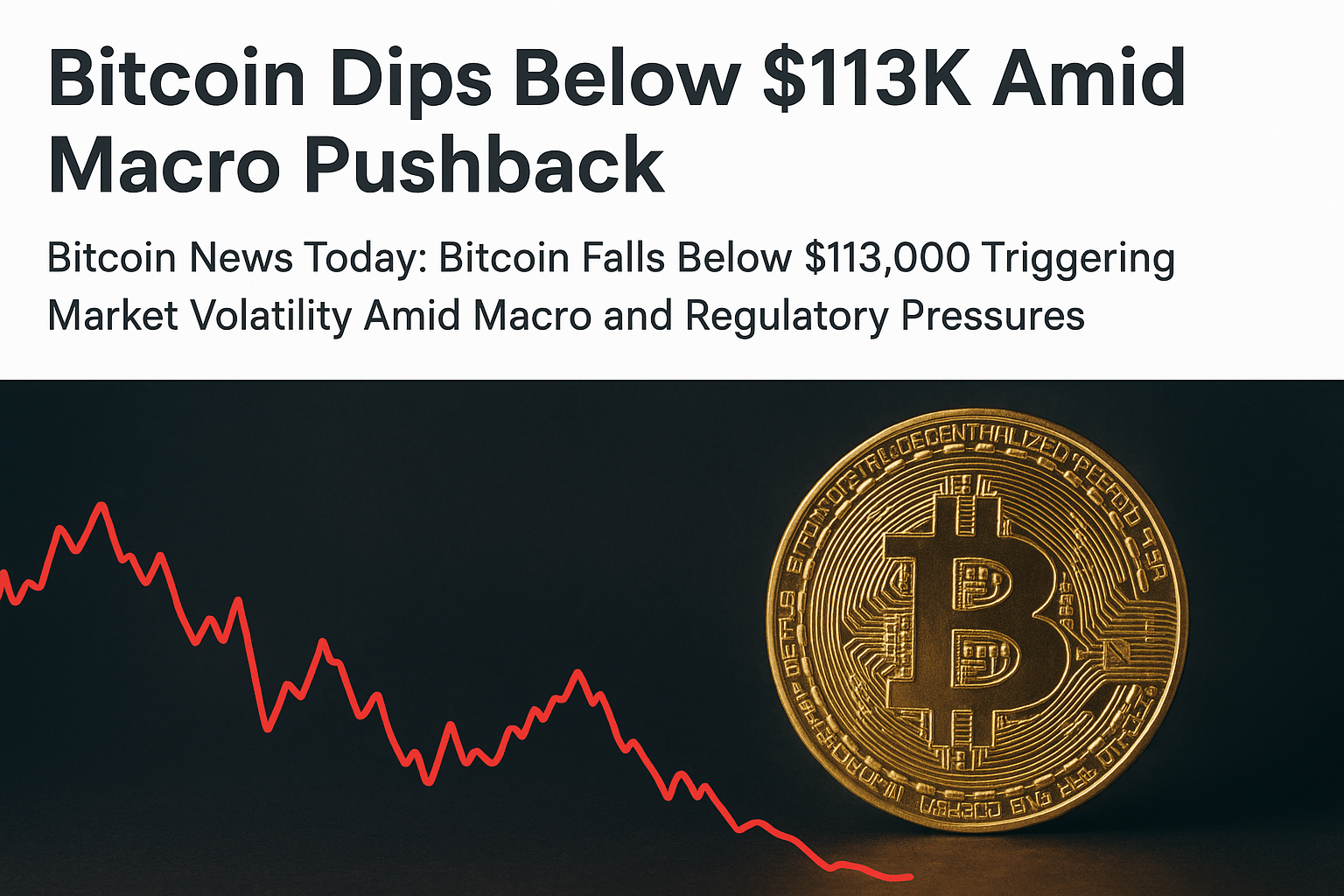On August 2, Bitcoin’s price slipped under the $113,000 mark, sending ripples of volatility through the cryptocurrency markets. This sudden downturn was not an isolated event—it came amid a confluence of macroeconomic headwinds, regulatory uncertainty, and sizable sell-offs from large holders, often referred to as “whales.”
Macro Headwinds Intensify
The broader economic environment has been growing increasingly challenging for risk assets. Persistent inflation pressures, ongoing interest rate uncertainty from major central banks, and concerns over slowing global growth have made investors more cautious. For Bitcoin, which has often been viewed as a hedge against traditional financial instability, the latest macro data appears to have worked against that narrative—at least in the short term.
Regulatory Pressures Add to Investor Anxiety
Markets have also been rattled by renewed regulatory debates. Key jurisdictions, including the United States and the European Union, have been signaling tighter frameworks for crypto exchanges, custody providers, and token issuers. The lack of clarity on compliance requirements has amplified uncertainty for institutional players, some of whom have been reducing exposure while awaiting clearer guidance.
Whale Activity Fuels Sell Pressure
On-chain data shows that several large Bitcoin wallets executed significant transactions in the days leading up to the price drop. While it is not unusual for whales to move funds, the timing of these sales—aligned with weak macro sentiment—has intensified the downward momentum. Large sell-offs tend to trigger automated liquidations and stop-loss orders, further accelerating declines.
Contagion Across the Crypto Market
Bitcoin’s fall below $113K had a domino effect on other major cryptocurrencies. Ethereum, Solana, and Binance Coin all saw sharp intraday losses, while smaller-cap tokens suffered even more pronounced declines. This broad market sell-off underscores how closely correlated digital assets remain during times of heightened stress.
Short-Term Outlook
Analysts remain divided on what comes next. Some argue that this is a healthy correction after a strong multi-month rally, while others warn that macroeconomic and regulatory challenges could keep pressure on prices for weeks. Historically, Bitcoin has shown resilience in recovering from sudden downturns—but the path forward may hinge on both global financial stability and the pace of regulatory clarity.
For long-term holders, the latest dip may present an opportunity to accumulate at lower prices. However, short-term traders should be prepared for continued volatility as macro and policy narratives evolve.
If you want, I can also expand this into a more in-depth, 2–3× longer analysis with market charts and whale activity breakdowns. Would you like me to do that next?




